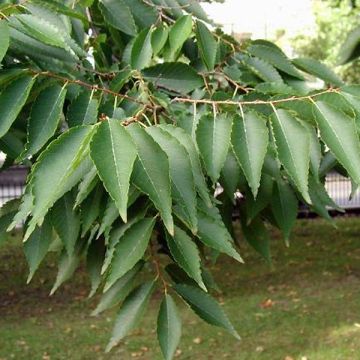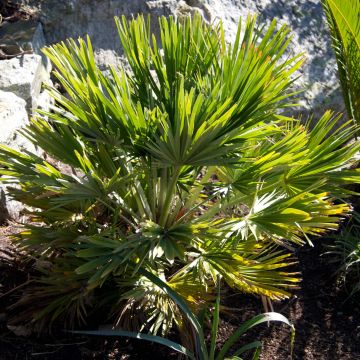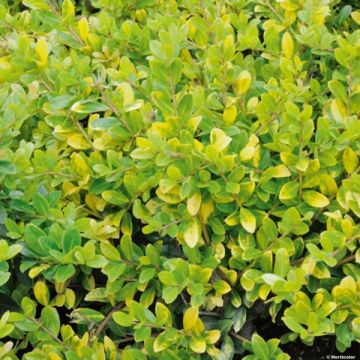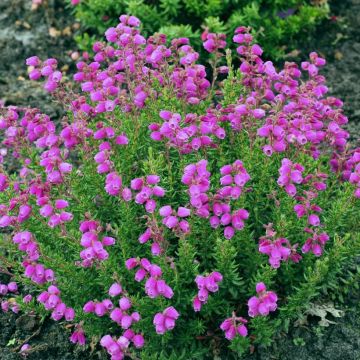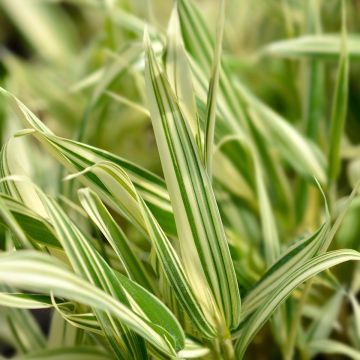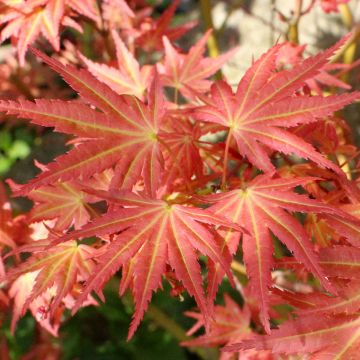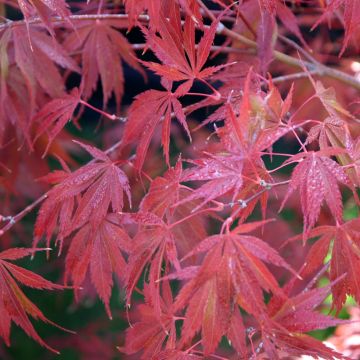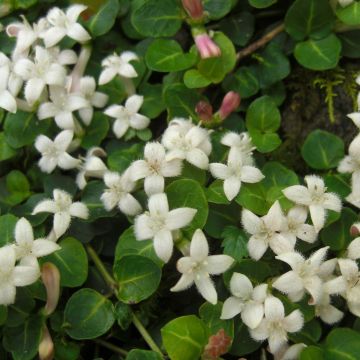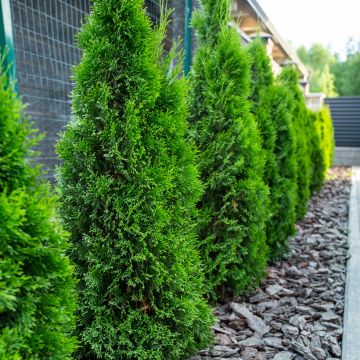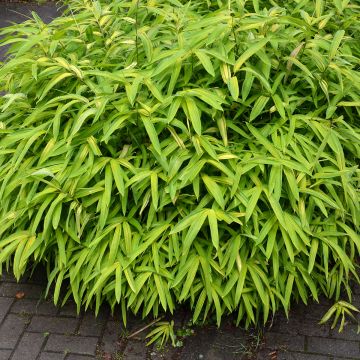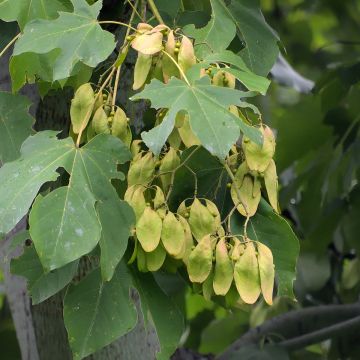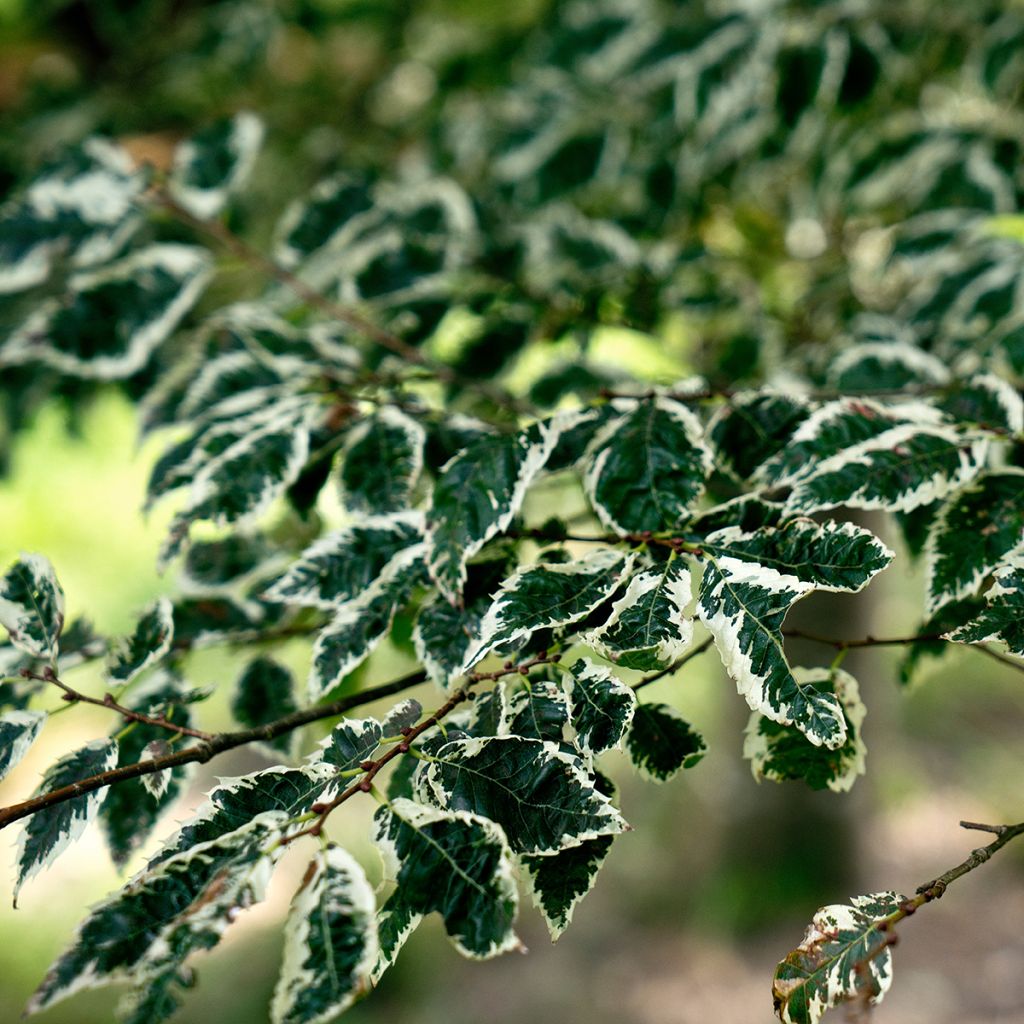

Zelkova serrata Variegata
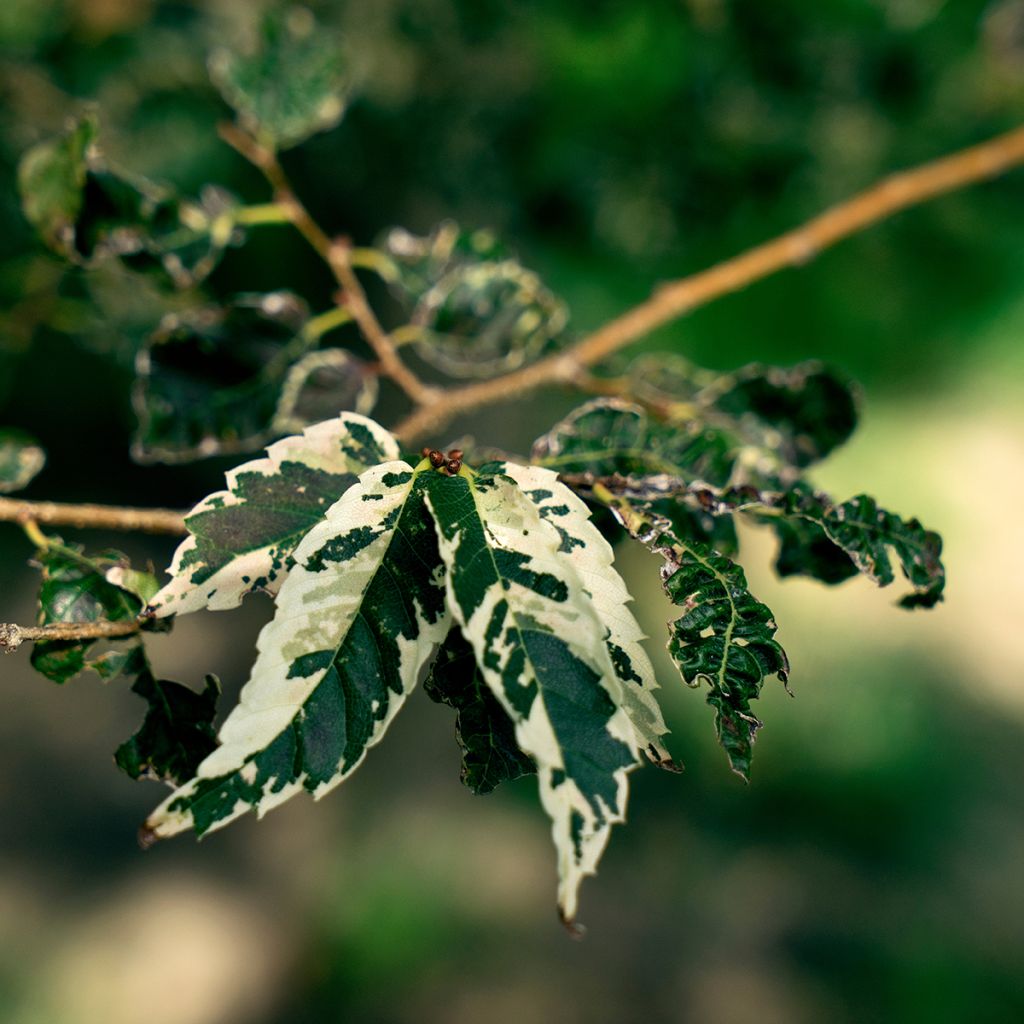

Zelkova serrata Variegata
Zelkova serrata Variegata
Zelkova serrata Variegata
Japanese Zelkova, Siberian Elm, Saw-leaf Zelkova
This plant carries a 24 months recovery warranty
More information
We guarantee the quality of our plants for a full growing cycle, and will replace at our expense any plant that fails to recover under normal climatic and planting conditions.
Oversize package: home delivery by special carrier from €6.90 per order..
Express home delivery from €8.90.
Does this plant fit my garden?
Set up your Plantfit profile →
Description
The Zelkova serrata Variegata is a compact variety of Siberian Elm, which produces stunning green foliage edged with white, turning warm colours in autumn. Slow-growing, it typically forms a small tree with a short trunk and a highly branched crown that is as wide as it is tall. Its grey bark exfoliates over time, revealing orange areas. A deciduous tree, its highly architectural silhouette is highlighted in winter. Preferring partial shade in neutral to acidic soil, it thrives in cool conditions and is quite hardy.
Native to northern and eastern Asia (Japan, Korea, Taiwan), the Zelkova serrata belongs to the botanical family Ulmaceae, along with Elms and Hackberries (Celtis). This majestic tree, with a relatively slow growth rate, can reach heights of up to 30m (98ft) for some mature specimens. It is very cold-resistant and prefers slightly acidic, well-drained soil, tolerating drought once established.
Of unknown origin, the Variegata cultivar stands out for its much more modest growth. Even slower growing than the original botanical species, it usually reaches a height of 5m (16ft), occasionally slightly taller, with a similar spread. It develops a short and stocky trunk from which spreading main branches arise, giving rise to numerous finer branches. They form the structure of its wide, regularly shaped, rounded, dome-like and very dense crown. The young bark of this tree is smooth and grey-brown, and as it ages, it exfoliates into small plates, revealing a new and vibrant orange-coloured 'skin' (this is the phloem, the zone of contact between the bark and the wood).
The deciduous leaves are oblong to elliptical, 7cm (3in) long, tapering to a point, adorned with very regular pointed teeth. Their central part displays a beautiful bright green colour with irregular contours, bordered by a wide white margin depending on the leaves. Visually, the tree has a very luminous appearance, enhanced by the light shade it casts. As is often the case with variegated plants, some branches may be entirely green, and they should be removed. This decorative foliage, throughout the growing season, takes on a new dimension in autumn when it turns yellow-orange before falling to the ground.
The flowering, on the other hand, is discreet, green in colour, blooming at the same time or just after the emergence of the foliage in April-May. In Zelkova, the female flowers, green in colour, are separate from the male flowers, yellow in colour, but borne on the same plant. The female flowers will develop small kidney-shaped stone fruits, 0.3cm (1in) in diameter, without wings, changing from green to brown when mature.
This tree prefers acidic to neutral soils or slightly chalky. It particularly likes humus-bearing soils that can retain some moisture. However, it tolerates drier conditions once well-rooted. Tolerating full sun, it is more comfortable in light shade or even partial shade.
The Zelkova serrata Variegata is well suited to small gardens, unlike the overly imposing typical botanical species. It will bring a bright note to the garden when planted on the edge of large trees. In a medium-sized garden, you can create a stunning contrast by planting it alongside the Fagus sylvatica Purpurea Tricolor, a narrow-leafed Weeping Beech with purple leaves edged in a charming pinkish hue. If space is limited, opt for the Sambucus nigra Straight Laced, an extremely finely cut-leaved Elderberry with almost black foliage, which boasts a magnificent flowering in large pinkish-white corymbs in May-June.
To add some colourful foliage at ground level, consider planting blue-leaved Hostas like Blue Angel, which will stand out with its large leaves.
Report an error about the product description
Zelkova serrata Variegata in pictures


Plant habit
Flowering
Foliage
Botanical data
Zelkova
serrata
Variegata
Ulmaceae
Japanese Zelkova, Siberian Elm, Saw-leaf Zelkova
Cultivar or hybrid
Other Zelkova
Planting and care
When planting the Zelkova serrata Variegata, it is best to choose a deep, fertile soil that is not too dry or chalky. The soil should be rich in humus and slightly acidic. The tree has a deep root system that allows it to draw water from deep in the ground and survive dry periods that are not too long. It is recommended to plant the tree in a sunny location in a cool climate, or a semi-shaded location in warmer climates.
To plant the tree, dig a hole that is 50-60 cm (20-24in) on each side and depth and mix planting compost with the existing soil. Soak the tree's root ball in a bucket of water for fifteen minutes before planting it in the hole. Fill in around the tree and then water it generously. During the first summers, make sure to give the tree regular water and mulch to help it get established. In winter, prune the tree to balance its branches if necessary.
The Zelkova serrata Variegata is highly resistant to Dutch elm disease and is not very prone to parasites.
Planting period
Intended location
Care
This item has not been reviewed yet - be the first to leave a review about it.
Shrubs for pots
Haven't found what you were looking for?
Hardiness is the lowest winter temperature a plant can endure without suffering serious damage or even dying. However, hardiness is affected by location (a sheltered area, such as a patio), protection (winter cover) and soil type (hardiness is improved by well-drained soil).

Photo Sharing Terms & Conditions
In order to encourage gardeners to interact and share their experiences, Promesse de fleurs offers various media enabling content to be uploaded onto its Site - in particular via the ‘Photo sharing’ module.
The User agrees to refrain from:
- Posting any content that is illegal, prejudicial, insulting, racist, inciteful to hatred, revisionist, contrary to public decency, that infringes on privacy or on the privacy rights of third parties, in particular the publicity rights of persons and goods, intellectual property rights, or the right to privacy.
- Submitting content on behalf of a third party;
- Impersonate the identity of a third party and/or publish any personal information about a third party;
In general, the User undertakes to refrain from any unethical behaviour.
All Content (in particular text, comments, files, images, photos, videos, creative works, etc.), which may be subject to property or intellectual property rights, image or other private rights, shall remain the property of the User, subject to the limited rights granted by the terms of the licence granted by Promesse de fleurs as stated below. Users are at liberty to publish or not to publish such Content on the Site, notably via the ‘Photo Sharing’ facility, and accept that this Content shall be made public and freely accessible, notably on the Internet.
Users further acknowledge, undertake to have ,and guarantee that they hold all necessary rights and permissions to publish such material on the Site, in particular with regard to the legislation in force pertaining to any privacy, property, intellectual property, image, or contractual rights, or rights of any other nature. By publishing such Content on the Site, Users acknowledge accepting full liability as publishers of the Content within the meaning of the law, and grant Promesse de fleurs, free of charge, an inclusive, worldwide licence for the said Content for the entire duration of its publication, including all reproduction, representation, up/downloading, displaying, performing, transmission, and storage rights.
Users also grant permission for their name to be linked to the Content and accept that this link may not always be made available.
By engaging in posting material, Users consent to their Content becoming automatically accessible on the Internet, in particular on other sites and/or blogs and/or web pages of the Promesse de fleurs site, including in particular social pages and the Promesse de fleurs catalogue.
Users may secure the removal of entrusted content free of charge by issuing a simple request via our contact form.
The flowering period indicated on our website applies to countries and regions located in USDA zone 8 (France, the United Kingdom, Ireland, the Netherlands, etc.)
It will vary according to where you live:
- In zones 9 to 10 (Italy, Spain, Greece, etc.), flowering will occur about 2 to 4 weeks earlier.
- In zones 6 to 7 (Germany, Poland, Slovenia, and lower mountainous regions), flowering will be delayed by 2 to 3 weeks.
- In zone 5 (Central Europe, Scandinavia), blooming will be delayed by 3 to 5 weeks.
In temperate climates, pruning of spring-flowering shrubs (forsythia, spireas, etc.) should be done just after flowering.
Pruning of summer-flowering shrubs (Indian Lilac, Perovskia, etc.) can be done in winter or spring.
In cold regions as well as with frost-sensitive plants, avoid pruning too early when severe frosts may still occur.
The planting period indicated on our website applies to countries and regions located in USDA zone 8 (France, United Kingdom, Ireland, Netherlands).
It will vary according to where you live:
- In Mediterranean zones (Marseille, Madrid, Milan, etc.), autumn and winter are the best planting periods.
- In continental zones (Strasbourg, Munich, Vienna, etc.), delay planting by 2 to 3 weeks in spring and bring it forward by 2 to 4 weeks in autumn.
- In mountainous regions (the Alps, Pyrenees, Carpathians, etc.), it is best to plant in late spring (May-June) or late summer (August-September).
The harvesting period indicated on our website applies to countries and regions in USDA zone 8 (France, England, Ireland, the Netherlands).
In colder areas (Scandinavia, Poland, Austria...) fruit and vegetable harvests are likely to be delayed by 3-4 weeks.
In warmer areas (Italy, Spain, Greece, etc.), harvesting will probably take place earlier, depending on weather conditions.
The sowing periods indicated on our website apply to countries and regions within USDA Zone 8 (France, UK, Ireland, Netherlands).
In colder areas (Scandinavia, Poland, Austria...), delay any outdoor sowing by 3-4 weeks, or sow under glass.
In warmer climes (Italy, Spain, Greece, etc.), bring outdoor sowing forward by a few weeks.

































